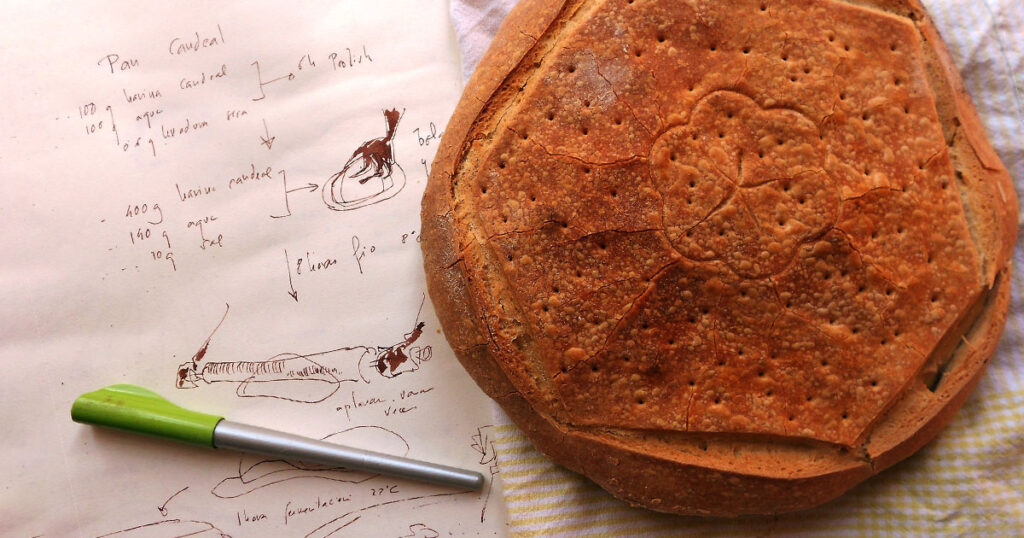
Arroz tres delicias is a tantalizing name, three delights, for fried rice. Patatas con tres salsas is fried potatoes smothered in three sauces (blue cheese, garlic mayonnaise, and spicy tomato) and despite the enticing variety of flavors, it’s a simple dish and a common choice of bar food in Asturias, like chicken wings in the States. Postre de tres chocolates is, as the name informs, a dessert, either a pudding or a frozen pie, made with three kinds of chocolate—dark, milk, and white. And that is the trio of foods I can think of involving three of anything. None of them is fundamental to my diet. And none is bread, that most basic of foods.
In Spain, bread has been a staple since before the Romans. Besides bread on the table to accompany a meal, many dishes are made from bread, such as sopa de ajo, migas, and gazpacho, which are garlic soup, crumbled bread, and cold tomato soup. Torrejas, similar to French toast, is a dessert. I have even found a recipe for tortilla de patata, the ubiquitous Spanish omelet, but made with bread instead of fried potatoes.
The modern-day loaf, which you can pick up fresh at any bread shop and most grocery stores, is called a barra and is oblong, something like a stocky baguette. But this common item is at least three steps down from the traditional loaves, big round hunks with a thick crust that ensures that the bread keeps for days. In the northern regions of Spain, cereals that do well in the climate, such as rye and barley, are commonly used for bread baking. Two other flours are also used in Asturias: spelt and corn flour. Both make delicious bread. In Castile, the central area of the country, the typical bread is made from candeal, a variety of wheat that dates from before the Romans. On a recent trip south to Valladolid, I tried this bread. Candeal makes for a very white and compact loaf, quite different from the spongier breads of the north. You can buy a small circular loaf called a pan de cuadros, or a longer loaf with pointed ends, called a fabiola. And then there is the large, circular, flat loaf marked with a flower design, giving this loaf its name, lechuguino, which means “excessively primped,” or “all gussied up.” Lechuguino! What fun the name is! The word was new to me, just like the bread it names. Was this a pretentious loaf among the rougher, tougher breads of the north? I ate a hunk at a restaurant the day I arrived, picnicked on a loaf with cheese that evening, and breakfasted the next morning in the hotel bar on toast made from this bread. Three delicious experiences on a cold weekend: a front had swirled in with gusting winds, and the temperatures were nippy on the high plains compared to my temperate town near the coast. It was very breezy that morning, a steady wind blowing at 25 miles per hour and gusting at 50. The occasion for the trip was a footrace, but rather than run, I feared I would be blown along the racecourse. To fortify myself, I ate more bread.
My running partner and I both won in our age group and received a bottle of wine and a box of mini magdalenas called Melitones, made in the town where the race was held. We’d had the foresight that morning to buy a loaf of bread, pulled from the oven just as we’d entered the bread dispensary, but we had no cheese to go with it. It didn’t matter because that loaf of bread, as we found out when we cut into it, was even better than what we’d breakfasted on. So off we set, three hours to home, with no snow on the horizon, a healthy appetite, and for me the leisure to nibble on plenty of gussied-up bread.


